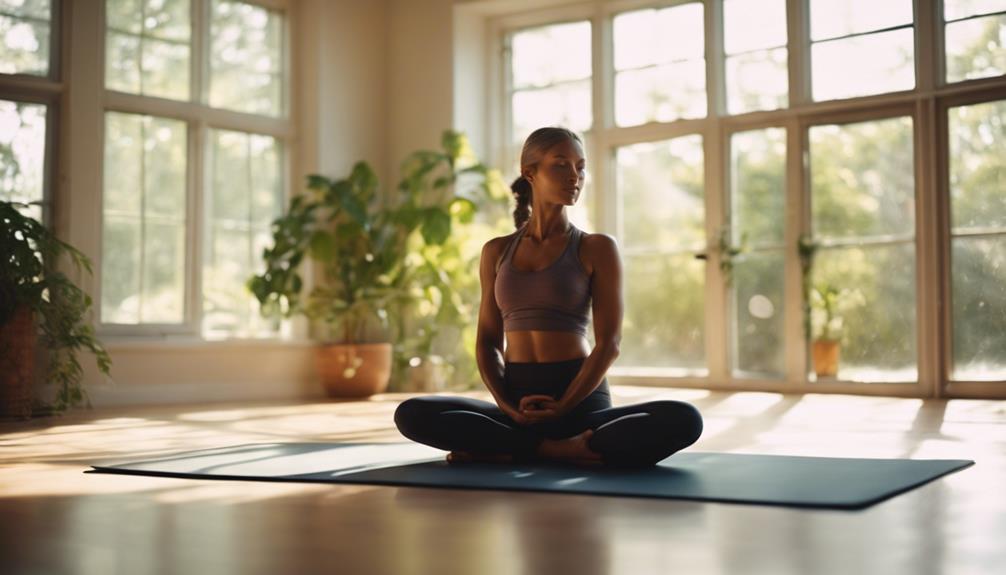How To Practice Yoga

Yoga has been practiced for thousands of years and offers a myriad of physical, mental, and spiritual benefits. Whether you’re looking to increase flexibility, reduce stress, or find a deeper connection with yourself, learning how to practice yoga can be a transformative journey. In this guide, we’ll cover essential aspects of yoga practice, from the basics to advanced techniques, ensuring you’re well-equipped to embark on this rewarding path.
Understanding the Basics of Yoga Practice
Before diving into how to practice yoga, it’s important to understand what yoga is. At its core, yoga is a holistic discipline that combines physical postures (asanas), breath control (pranayama), and meditation. The primary goal of yoga is to promote harmony between the body, mind, and spirit. If you’re new to yoga, start by familiarizing yourself with fundamental concepts such as alignment, breath, and mindfulness. This foundational knowledge will enhance your practice and help prevent injuries.
Choosing the Right Style of Yoga for You
One of the first steps in learning how to practice yoga is selecting a style that suits your needs and preferences. There are various styles of yoga, each with unique characteristics. Hatha yoga is great for beginners, focusing on basic postures and breathing techniques. Vinyasa offers a more dynamic flow, while Yin yoga emphasizes longer-held postures for deep stretching. If you’re looking for something more restorative, consider restorative or gentle yoga classes. Research different styles and, if possible, try a few classes to see which resonates with you.
Creating a Comfortable Yoga Space
Your environment plays a crucial role in how to practice yoga effectively. Creating a comfortable and inviting space can enhance your overall experience. Choose a quiet area in your home with enough room to move freely. If possible, incorporate elements like soft lighting, calming colors, and natural materials to create a serene atmosphere. Additionally, gather essential props such as a yoga mat, blocks, straps, and cushions to support your practice. A well-prepared space can significantly contribute to your focus and relaxation during your sessions.
Related Posts:
Starting Your Yoga Practice: Essential Postures
Once you’re familiar with the basics and have your space ready, it’s time to dive into essential yoga postures. As a beginner, focus on foundational poses such as Downward Dog, Child’s Pose, Mountain Pose, and Warrior I. These postures promote strength, flexibility, and balance. Make sure to listen to your body and practice with awareness, gradually building up your strength and flexibility over time. If you’re unsure about your alignment, consider following online tutorials or attending classes to receive guidance from experienced instructors.
Incorporating Breathwork into Your Yoga Practice
Breath control, or pranayama, is a vital aspect of how to practice yoga effectively. Breathwork enhances the mind-body connection and promotes relaxation. Start by practicing simple techniques such as diaphragmatic breathing, where you breathe deeply into your belly, or the 4-7-8 technique, which involves inhaling for four counts, holding for seven, and exhaling for eight. Integrate breathwork into your yoga sessions by synchronizing your breath with your movements. This practice not only helps in achieving deeper postures but also calms your mind and reduces stress.
Establishing a Consistent Yoga Routine
To reap the full benefits of yoga, consistency is key. Establishing a regular routine will help you progress in your practice and deepen your understanding of yoga. Start with short sessions, perhaps 15-20 minutes, and gradually increase the duration as you become more comfortable. Aim for at least two to three sessions per week. It’s also helpful to set specific goals, whether it’s mastering a particular pose, increasing flexibility, or enhancing mindfulness. Keeping a journal of your practice can also be a great way to track your progress and reflect on your experiences.
The Role of Meditation in Yoga Practice
Meditation is an integral part of how to practice yoga. It complements physical postures by fostering mental clarity and emotional resilience. Incorporating meditation into your routine can help you cultivate mindfulness and reduce anxiety. Start with simple practices such as focusing on your breath or using guided meditations. Even just five minutes of meditation before or after your yoga session can enhance your overall experience. As you become more comfortable, explore different meditation techniques, such as loving-kindness meditation or body scans, to find what resonates with you.
Listening to Your Body and Avoiding Injury
As you learn how to practice yoga, it’s essential to listen to your body and respect its limits. Yoga should never be painful; if you experience discomfort, ease out of the pose or modify it. Using props, like blocks or straps, can help you achieve proper alignment and support your body during challenging poses. Additionally, consider consulting with a certified yoga instructor, especially if you have existing health conditions or injuries. A knowledgeable teacher can provide personalized guidance and adjustments, ensuring a safe and enjoyable practice.
Conclusion: Embrace Your Journey in Yoga Practice
In summary, learning how to practice yoga is a rewarding journey that can enhance your physical health, mental clarity, and spiritual well-being. By understanding the basics, selecting the right style, creating a supportive environment, and establishing a consistent routine, you can cultivate a fulfilling yoga practice. Remember that yoga is not just about mastering postures but also about connecting with yourself and finding peace within. Embrace this journey, and enjoy the process as you explore the transformative power of yoga. Whether you practice at home or in a studio, each session offers an opportunity for growth and self-discovery.
By following these guidelines and committing to your practice, you’ll not only improve your yoga skills but also enhance your overall quality of life. So roll out your mat, take a deep breath, and embark on this beautiful journey of yoga.How Much Money Does A Yoga Instructor Make